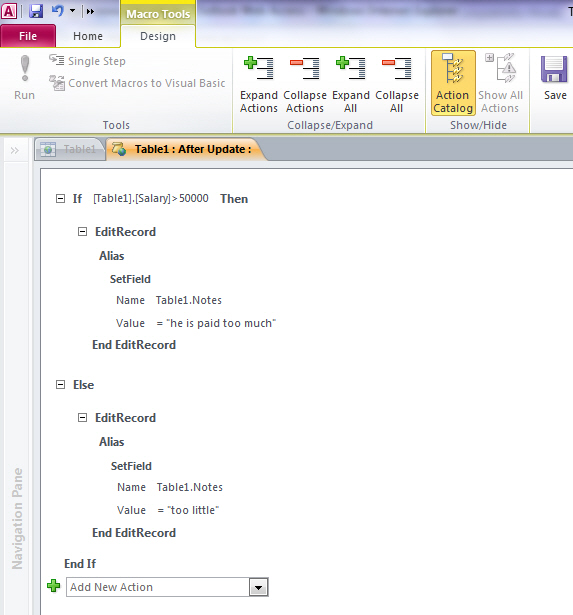
Figure: Wish I could copy this as text via a button ‘Edit Macro XML’ (like a SQL view in a query)

Figure: Wish I could copy this as text via a button ‘Edit Macro XML’ (like a SQL view in a query)
It is very important that Microsoft Word picks up all spelling/grammar issues. It may be one little bug, but more likely this bug could affect a lot of possible sentences.
More and more people with English as their second language rely on this to make their emails professional.
When you type a sentence using the verb in the singular form with the subject is in the plural form, “Spelling and Grammar Check” tool does not pick it up as an error unless you keep typing more words after that.
E.g. “For documents that belongs on the inside…” should be “For documents that belong on the inside…”

Figure: BUG – Microsoft Word’s Spelling and Grammar Check tool can’t pick up some correct words

Figure: BUG – Microsoft Word’s Spelling and Grammar Check tool does not highlight the error if you have “…” at the end of the sentence
Note: We also rely on this with our Do you use Microsoft Word’s spelling and grammar checker to make your web content professional? rule.

Figure: Another incorrect suggestion

Figure: Another incorrect suggestion
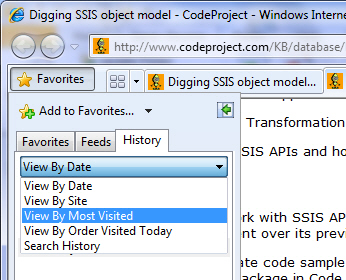
Figure: Add “View by Last Closed”
Microsoft Office applications allow you to control when Smart Tags are triggered by using ‘recognizers’. The list of recognizers can be altered, in most cases through the AutoCorrect options dialog. (See screenshot of Word’s AutoCorrect dialog below.)
It would be good if the list box could allow the user to drill down each recognizer item and view sample data (e.g. for ‘Dates’ the sample data would be a date, such as ‘1/1/2003’).
There are two ways in which this could be implemented, namely:
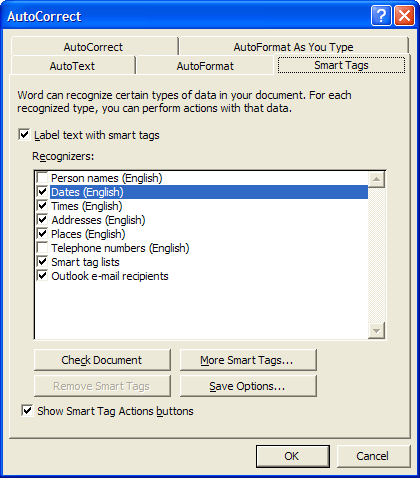
Figure: Smart tag settings in Microsoft Word
Office could be improved in how it handles extending of its smart tag functionality.
Currently adding a custom smart tag requires editing registry; this should not be necessary. It would be better to implement an “Add Smart Tag” button to the Smart Tags tab of the AutoCorrect dialog.
Also, the “More Smart Tags” button in this dialog should be implemented as a hyperlink, as it links directly to a page on the Microsoft website.

Figure: Smart tag settings in Microsoft Word
Users of the Google Toolbar may be familiar with the Highlight option, which highlights all occurrences of the current search keywords in the current document. This is a very handy feature and it would be good to see it in all Microsoft Office applications as well.
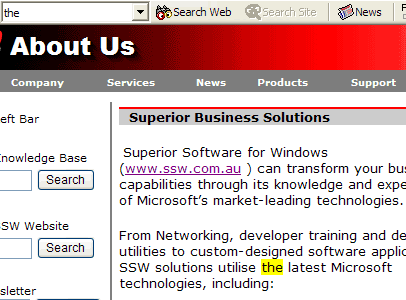
Figure: Google highlight option in use
It would be nice if Office stored all of its settings files in a readable format. For example, if the settings files were stored as XML, then the user could clearly see the settings that were applied, and also be able to import/export parts of the settings files themselves (this is different to the current system where you have an all-or-nothing approach to the import/export of settings).
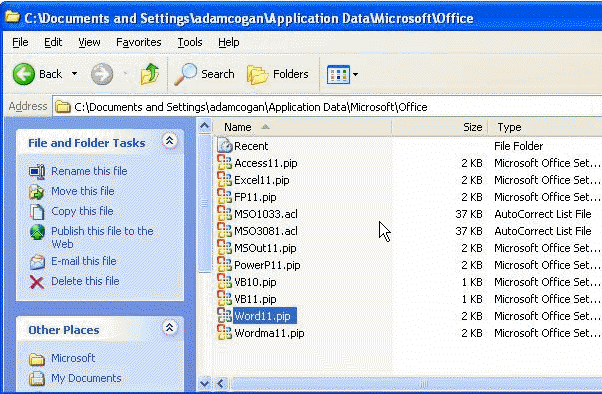
Figure: Settings files are stored in binary format, they should be XML
But what about invalid xml?
Just give the user a message something like: “Someone has changed with the xml and now it is invalid. Reverting to default settings.”
Note: Have renamed the file to zzWord11.xml so that they can attempt to fix it if they want to.
We share our calendars and one of the things that screws scheduling meetings, is because many people put in a non-appointments as appointments (people look busy when they are not). e.g. ‘Pay rent’ when they actually just need an email each Tuesday.
There is another advantage to removing appointments of this type, people get fewer reminders. So they don’t get desensitized to extra reminders that are not time critical.
PS: I don’t really want to install an outlook add-in (but I’ll take anything)
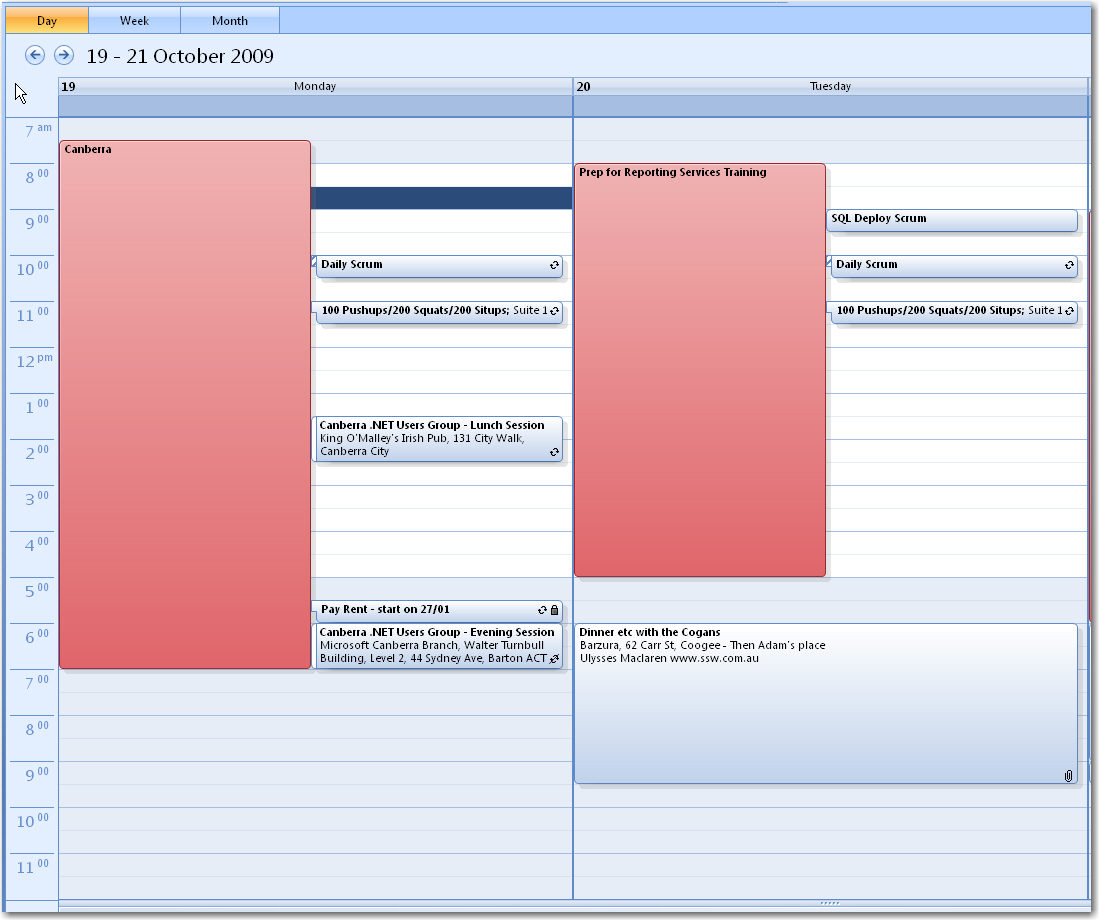
Figure:’Pay Rent’ just another non-appointment as an appointment – because of missing functionality in Outlook/Exchange
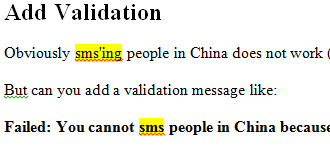
Figure: these 2 words need to be added to the spell check library, or include specific suggestions to fix